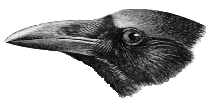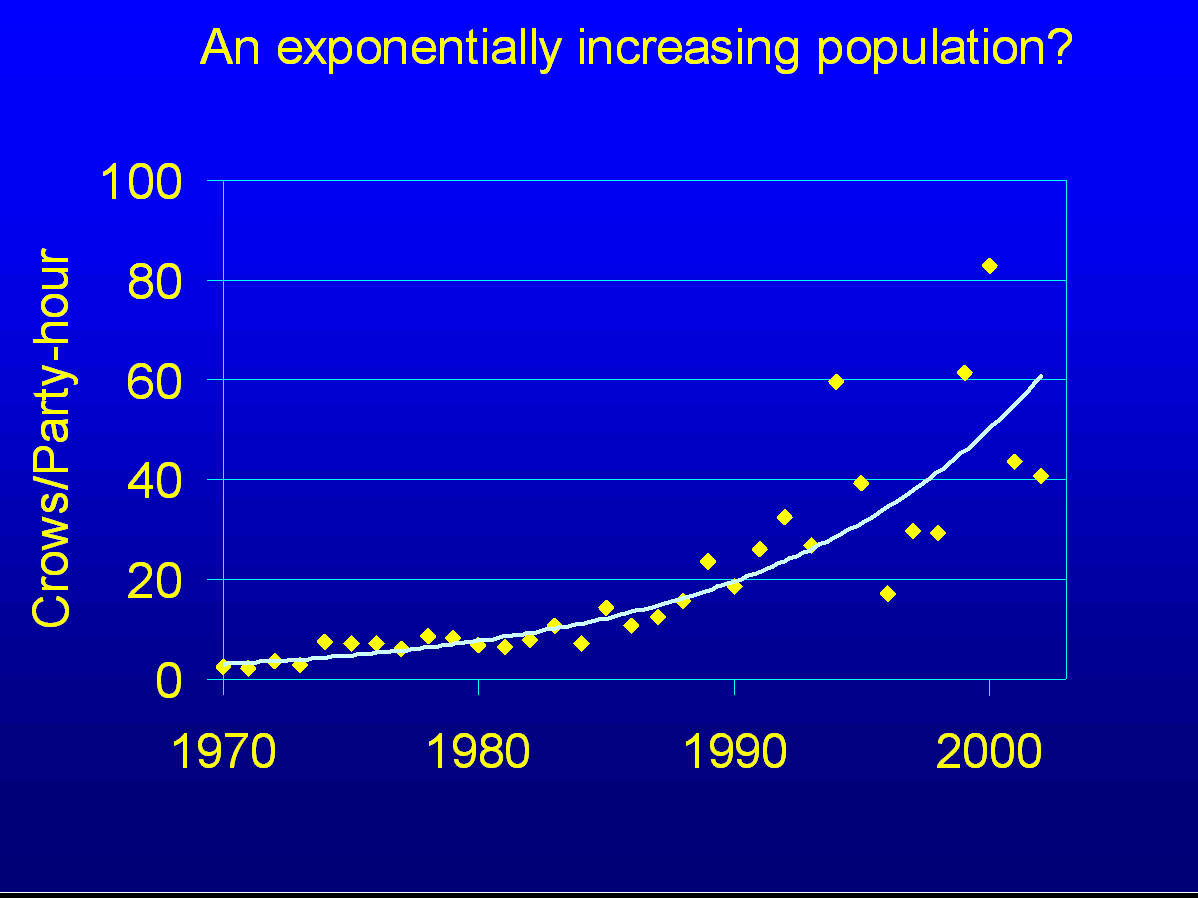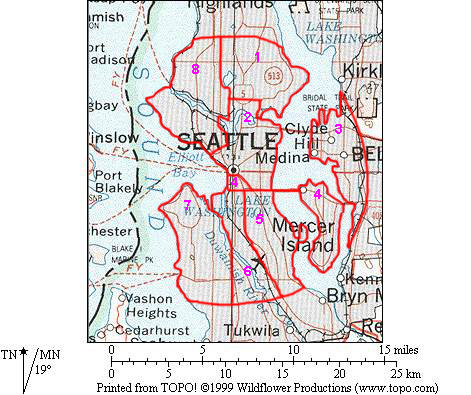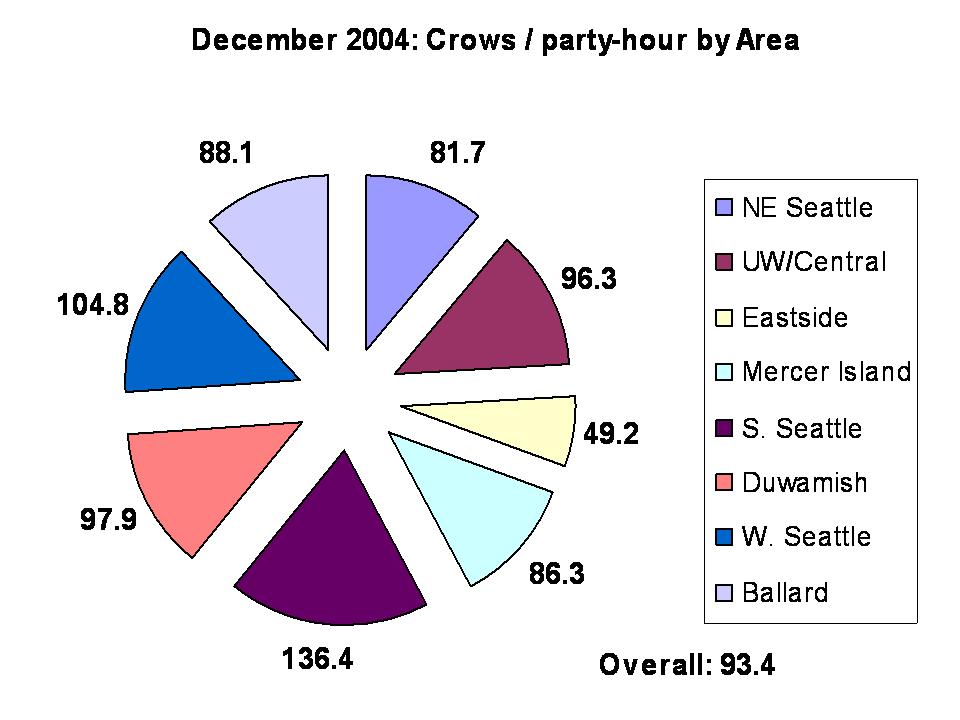

The Seattle Crow Survey began in October 2000 as a monthly survey of Seattle's American and Northwestern Crows, conducted by University of Washington researchers and the Seattle Audubon Society, with the participation of many valiant volunteers. We began the survey to determine whether and how crow populations in the city vary throughout the year. Over the last 30 years the populations seem to have increased substantially, as indicated by results of the Seattle Audubon Society's Christmas Bird Counts (for more information visit the CBC web site).

However, since the CBC is conducted once a year during the winter, we do not know if the local summer population is increasing in the same manner, or if the CBC results are indicative of more crows coming into the Seattle CBC area seasonally.
To check how the Seattle crow population varies throughout the year, we began a survey in the Seattle CBC area (a 7.5-mile radius circle around downtown), using methods similar to the CBC but counting only crows. To stay consistent with the Seattle CBC data, we count all crows and do not attempt to make a determination between the American and Northwestern Crows. We divided the area into the following sub-areas and established a survey route in each sub-area.
 CROW SURVEY AREAS
CROW SURVEY AREAS1. NE Seattle
2. UW/Central
3. Eastside
4. Dowtown / Mercer Island
5. South Seattle
6. Duwamish
7. West Seattle
8. Queen Anne / Ballard
The results of each month's survey are shown below. Until the breeding season began, the "crows per party-hour" observed was fairly consistent from month to month.. For the five months from October 2000 to March 2001 combined, there were 88 crows/party-hour recorded, very similar to the 83 crows/party-hour reported on the December 2000 Seattle Christmas Bird Count. However, on the April count we recorded only 41 crows/party hour. The decrease in the crow count coincided with the incubation stage of the majority of nests we monitor on the UW campus and in downtown Seattle. Therefore we believe that the decrease is explained by more incubating females (that are difficult to see) on routes rather than a dramatic drop in the crow population in Seattle. The counts rebounded from that April low back towards to levels last seen during the previous winter. October-December 2001 counts were 32% higher than October-December 2000 counts, indicating that the crow population may have continued to grow.
If the decrease in counts was due to a seasonal movement of crows in and out of the Seattle area, we would expect to observe a decrease beginning in March at the latest, when breeding crows start to build nests, rather than in April. In addition we also would expect to see a large increase in the fall, rather than by July. Therefore we believe that the winter Christmas Bird Counts are reasonable to use as an index of the urban population.
Once West Nile virus was detected in Washington state, we realized that we had a unique opportunity to track the impact of the virus on a currently growing crow population. We restarted the counts in October 2002, and will continue to conduct them every three months for the foreseeable future. More recently (see latest survey results, below) counts have dropped from a high in October 2002, even though West Nile virus has not been detected in crows in 2003 or 2004. Some dead crows collected in West Nile monitoring efforts were diagnosed with reovirus, an avian disease that does NOT affect humans, but may have contributed to population change in crows this year. Please refer to the West Nile link above for more information about our efforts to study the virus in crows.

The latest counts (12/04) were down 11% from three months ago, but up 15% from a year ago (12/03). When you look at the December-to-December counts (highlighted in blue on the graph above), it definitely looks like a stable population, rather than an increasing one. We see a typical seasonal pattern of high counts in September, likely from that year's reproductive output, then lower counts as some of these juveniles die off.


Our crow and songbird site has more information on our research activities and a link to report banded crows. For more information please contact:
John Withey
College of Forest Resources
University of Washington, Box 352100
Seattle, WA 98195-2100
206.543.2764
crow_removethis_@u.washington.edu
Sunday, April 3, 7:45 a.m.
Sunday, June 26, 7:30 a.m. (tentative)
For more information on future surveys, contact John Withey for more information.
